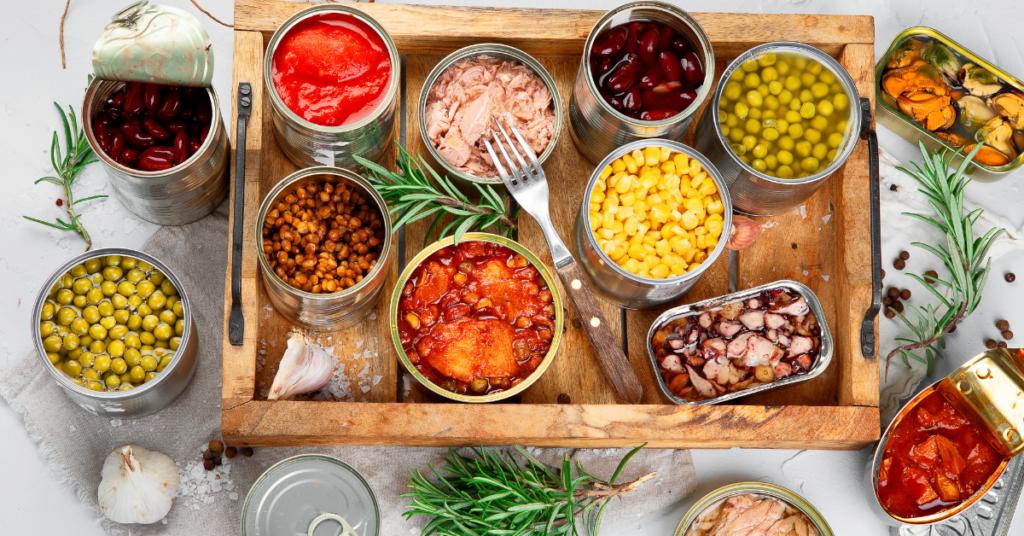Being prepared with Food Supplies for emergencies is essential. Some disasters aren’t predictable, so you are saved with your stocked food supply when you can’t buy food in the grocery store. You can check your calorie needs by your height and weight to store enough food and emergency supplies to keep your health up.
See our Emergency Food Supply List here:
#1 – Water
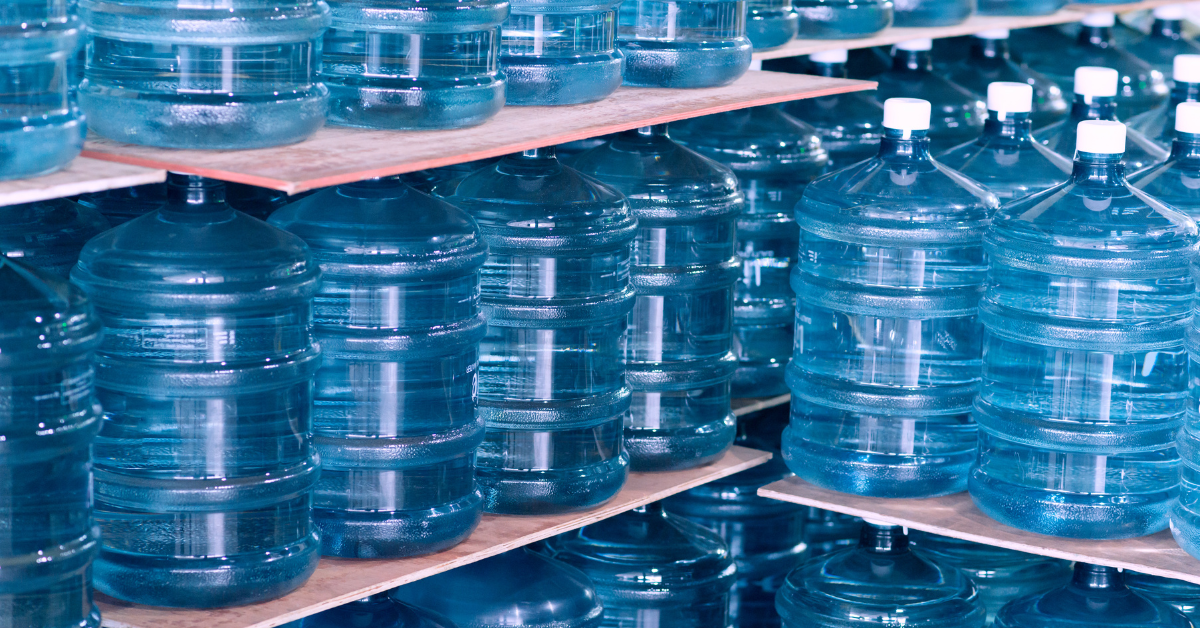
Your body is about 50-70% made up of water. It regulates the body temperature and the transport of nutrients and flushes waste from the body. So to not get dehydrated, you should fill your stomach with one gallon daily (depending on your weight and height). This sounds like a lot, but 20% of the water comes from food. If you are doing hard work or sports, you will sweat and have to drink more to avoid dehydration. [1]
The red cross recommends that everyone stock their storage with water to drink for two weeks. This means per person, you need to hoard 11 – 14 gallons (ca. 42 – 53 liters) just for drinking. But the more, the better. Think about your Sanitation and water for cooking.
For storing, have a look at the expiry date for store-bought water. You find more information about bottled water that can expire here: #Can Water Go Bad?
#2 – Canned Food
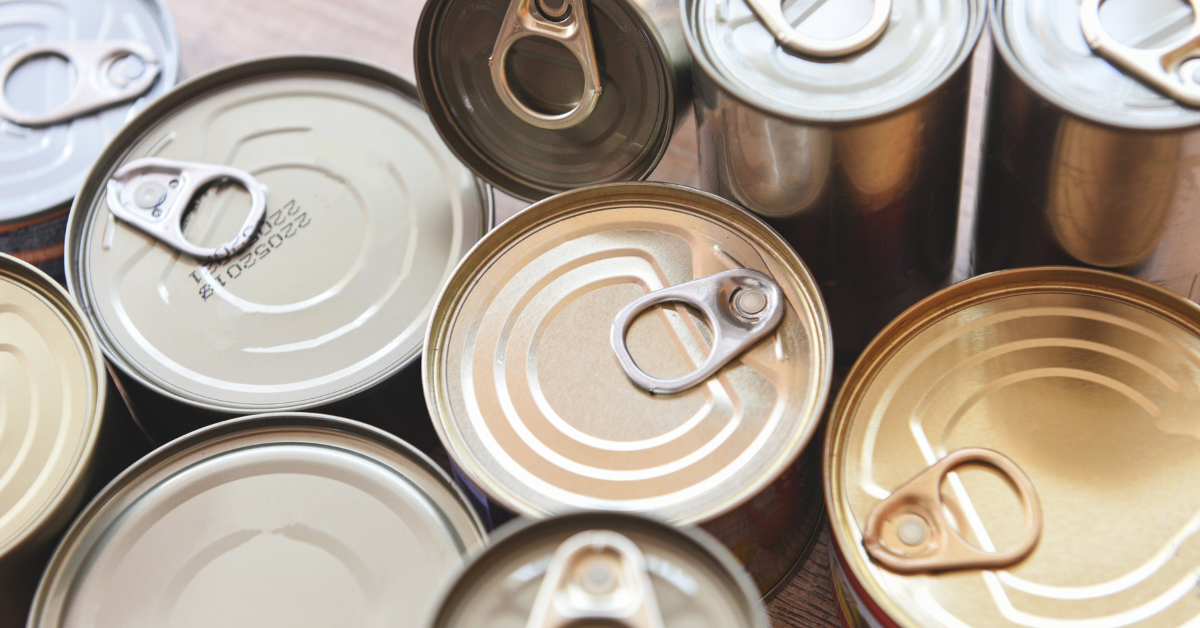
This food lasts for years, and most canned goods are ready to eat because it’s already cooked. They are a must-have in any long term food storage!
Because storing fresh vegetables, fruits, or meat is impossible in an emergency, canned food is the one to go. Keep an eye out for low-sodium canned food. Too much salt causes risky health damage by high blood pressure and thyroid function, and salty food makes you thirsty.
| Type | Nutrition | Use |
|---|---|---|
| Beans | High Proteins, low in Fat | Soups, Chilis, salad, Fresh Salsa, Stews Meat Dishes, and Baked Desserts |
| Meat | High in Proteins, Vitamin B12 | Patties, Dips, Pasta, Salads, Soups |
| Fish | High Proteins, Vitamins | Pasta, Dips, Salads |
| Tomatoes | Vitamin C | Pasta, Stews, Lasagna, Pizza, Soups |
| Coconut Milk | High in Fat | Smoothies, Soups, Marinades, Desserts, Sauces |
| Corn | Fat-free, low Carbs, and Calories | Stir-Fries, Soup, Salad, Snack, Chilis |
| Fruits | Vitamins and Minerals | Dessert, Snack, Yogurt, Fruit Salad |
| Olives | Vitamin E | Salad, Pizza, Sandwiches |
| Pumpkin | Vitamin A, Vitamin C, and Potassium | Pie, Bread, Soups, Smoothies, Pasta Dishes |
#3 – Freeze Dried Food
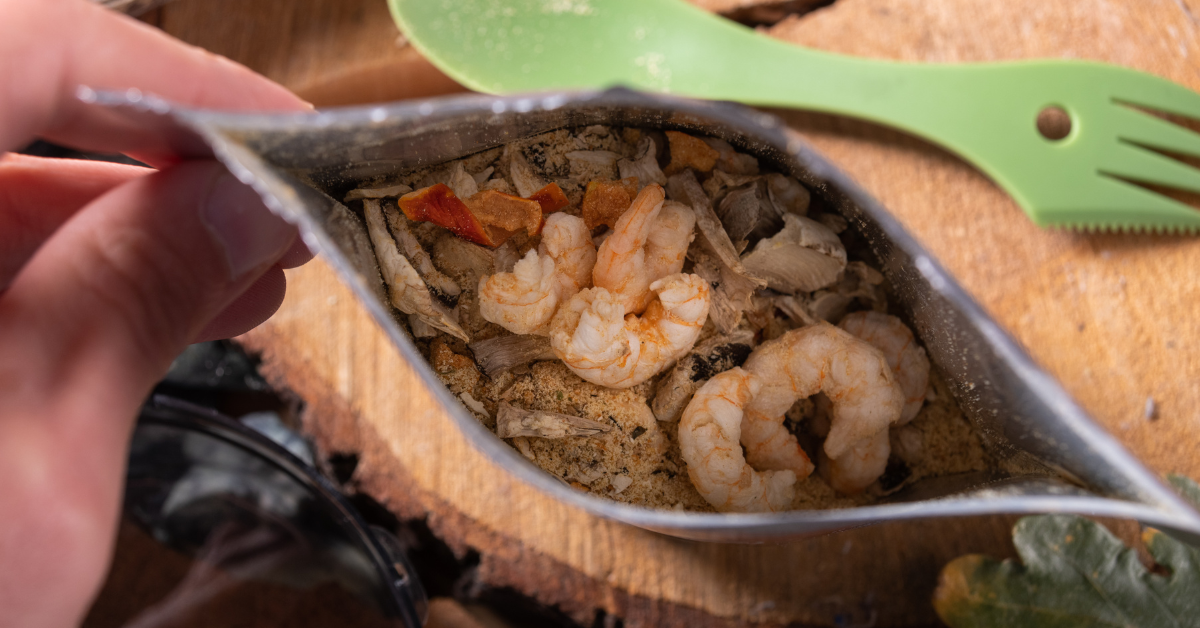
After canned Foods, they are also a survival food that is easy to store. Because they don’t need a place in the refrigerator or freezer. It’s enough to keep them in a dark, cool place like a basement.
The selection of frozen foods is vast, so you can create your own choice by what you like or not. Freeze-Drying Foods are done by lowering the temperature to below freezing and putting a high-pressure vacuum on it to dehydrate them.
You can wet them by adding water and wait for further cooking treatment.
Fruits
- Apple slices
- Apricot
- Avocado
- Bananas
- Blackberries
- Blueberries
- Coconut
- Cherries
- Grapes
- Kiwis
- Lemons
- Limes
- Mango
- Oranges
- Peaches
- Pineapple
- Strawberries
- Watermelon
- Mixed Fruit
Vegetables
- Broccoli
- Carrots
- Celery
- Corn
- Onions
- Peas
- Peppers
- Potatoes
- Eggplant
- Green Beans
- Beans
- Mushroom
- Pumpkin
- Spinach
- Tomatoes
- Zucchini
Meats
- Chicken
- Fish
- Ham
- Pulled Pork
- Roast Beef
- Sausage
- Steak
- Turkey
Dairy and Eggs
- Eggs
- Milk
- Cheese
- Sour Cream
- Whipped Cream
- Yogurt
- Buttermilk
- Cottage Cheese
Full Meals
- Rice
- Soup
- Stew
- Meatballs
- Mashed Potatoes
- Macaroni & Cheese
- Lasagna
- Ham Fried Rice
- Chili
Drinks
- Orange Juice
- Smoothies
- Milk Powder
#4 – Dried Food
As the name says, this food is dried, so the heat treatment has removed all the water. It will last for years, but it depends on the type. Beans or Lenses will last about ten years, but dried fruits just for one year.
The assortment of dried foods is as enormous as freeze-dried foods. See above #3
#5 – Comfort Food
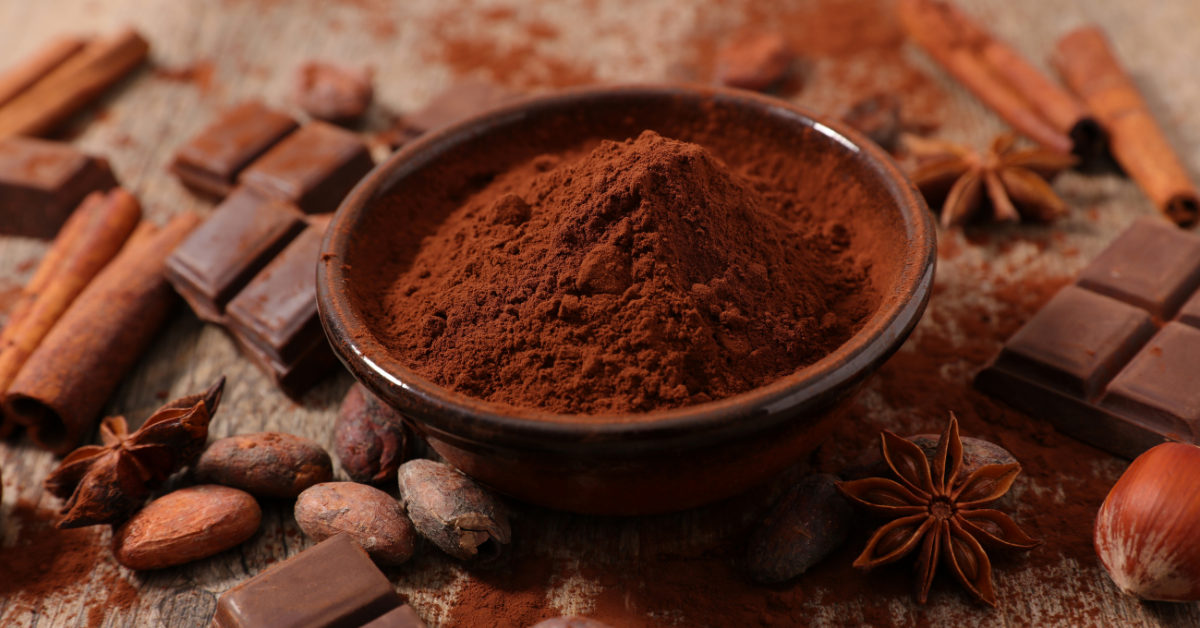
Here you can decide which food you like for comfort. After a stressful day, what do you want to eat or drink?
Here are some examples
- Coffee and Tea
- Pudding (For a long-lasting storing, better use instant mix for pudding)
- Hot Chocolate (Fabricated Cacao Powder)
- Popcorn (Dried Corn is a good proviant to store)
- Pasta
- Dark Chocolate (longer shelf life than milk chocolate)
- Candy (Lollipop lasts up to a year)
#6 – Food for Infants
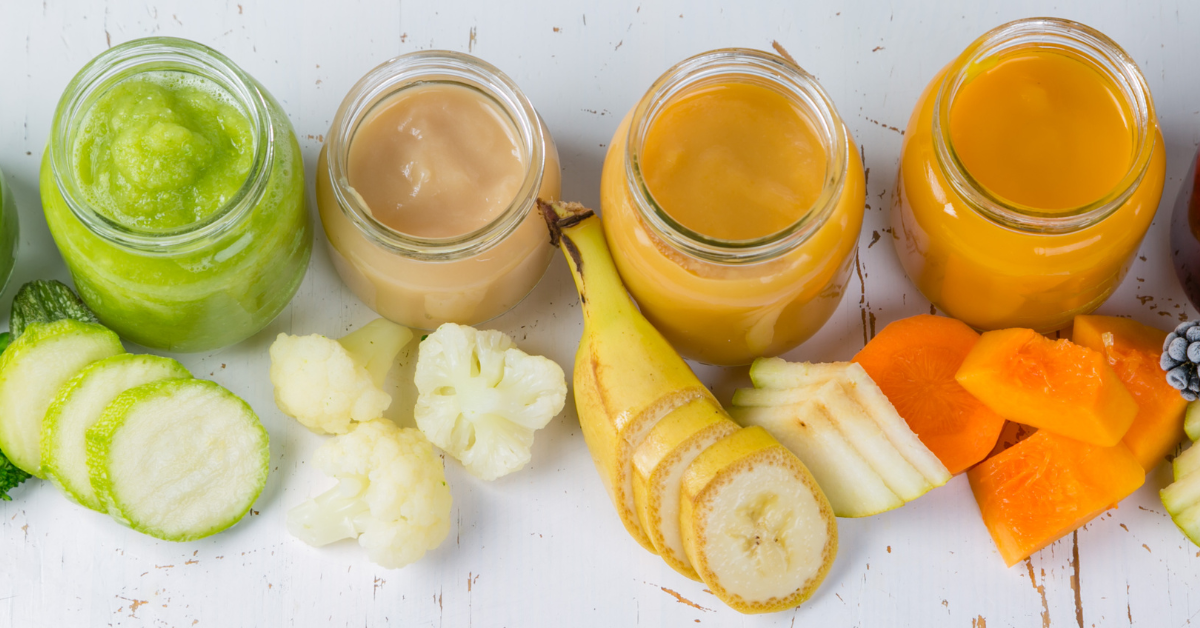
If you have an infant or are planning for kids in a catastrophe where no grocery store is open, it might be a good idea to have some emergency food supplies just for infants or toddlers.
Infant Milk Formula
- For non-breast-fed infants and moms or dads that can’t do breastfeed
- Check the expiration date, and do not use it after this date!
Sealed Baby Food
- In Jar
- Shelf-stable, but always check the expiration date.
- Listen for a popping sound by opening it to ensure the jar was sealed properly.
#7 – Oils
It is also good to store oil if you want to cook or bake something. Vegetable Oils should last two years.
Coconut Oil is not only good for cooking, but it’s also good for moisturizing skin.
#8 – Bars
For something quick in between times, store some bars. They are perfect for Bug Out Bags.
We have a whole article about the Best Emergency Food Bars!
- Protein Bar
- Fruit Bar
#9 – Honey

Honey is a potential substance; it is “one of the most stable natural foods you will find” [2]. It can last very long if you store it right, even if the best-by date says two years.
Keep this survival food sealed in a dark place at room temperature. Typically, Honey begins to crystallize after a time, but that’s okay. Just warm it up (don’t overheat it). It’s also known for its healing effect because it has an anti-inflammatory effect.
#10 – Salt
Iodine deficiency is prevented by eating enough ionized salt. This is important for your health. Also, I highly recommend you store salt to give your food a better taste. Storing salt is no problem. It stays good indefinitely. Just keep it dry.
#11 – Cheese
Be careful by storing cheese for the long term. Most cheese is not suitable for it, but luckily there is some.
- Powdered Cheese (freeze dried packed in cans, lasts to 25 years)
- Cheddar
- Mozzarella
- Pepper Jack
#12 – Food for Pets
When you live with furry friends, think about storing food and water for them. You can check out canned foods or freeze dried foods for them. Long-lasting Food Kits for Dogs or Cats include water, food, first aid, basic supplies, and even toys.
#13 – Food Kits
Food kits are an excellent option if you want to be prepared different meals that are ready to eat. There’s an extensive selection of various meals of various brands that last a long time, like 20 to 35 years. The only thing you need to add is water, just like for freeze-dried foods. So they are an easy option and a good thing for outdoor use.
#14 – Vitamins

Good food is the key to giving your body what it needs. Not all vitamins are synthesized in the body, so it just comes to you through food. To prevent an underfeeding of vitamins, you can stock your store with supplements like tablets for bad times.
Vitamin A
Necessary for growth regulation and development of cells. A deficit can cause poor eyesight and even blindness, and skin redness. You find Vitamin A in Beef, Liver, Eggs, Fish, and Seafood, and in yellow or grüne vegetables like Carrots, Sweet Potatoes, or Pumpkin.
Vitamin B
The most important B-Vitamins are B1, B6, and B12. They are for metabolisms like blood building and the function of nerves in the immune system. Vitamin B12 is in Meat and dairy products or Eggs. But don’t forget Fish, Broccoli, Legumes, Avocados, Soybeans, Spinach, and Watermelon also include Vitamin B.
Vitamin C
For a normal function of the immune system, and helps with the intake of iron. Good Vitamin C sources are Citrus Fruits, Chili Pepper, Paprika, Potatoes, Broccoli, and Cereals.
Vitamin D
For bone metabolism, and helps with the intake of calcium from the colon (Resorption) to get built into the bones, mainly in fatty fish but also in fortified Milk, Eggs, or Mushrooms.
Vitamin E
Is good for cell protection of harmful influences. You get them through eating leafy green vegetables like Spinach or Broccoli, whole Grains, Nuts, or vegetable Oils.
Vitamin K
Production of blood coagulation factors. Without it, our bodies can’t produce these factors and don’t stop bleeding. For women, it’s extremely important because of the high risk of osteoporosis. Vitamin K helps to inhibit bone loss after menopause. Your Vitamin K household should be safe from eating leafy green vegetables, Dairy, Meat, Eggs, or Grain.
What Now?
During emergencies, having an emergency supply is crucial.
The Red Cross stresses the significance of having a two week emergency supply list.
To set up your Emergency Food Supply, note what food you like and how long you want to be prepared
